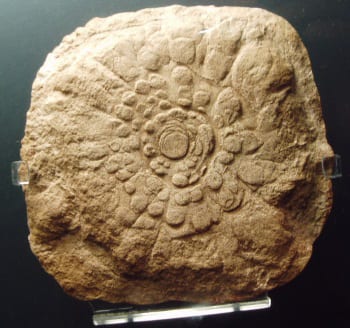Fossil Jellyfish (January 29)


Wisconsin is home to a very important fossil find – the jellyfish. So what’s the big deal about a fossil jellyfish?
In Central Wisconsin, near the town of Mosinee, is a rock quarry. But this is no ordinary quarry; it contains many thousands of fossilized jellyfish. Why are they there? In the oceans, jellyfish are squishy blobs of clear gel. How could squishy jellyfish fossilize? Generally, hard substances become fossils – not soft substances. Also, if you have ever been to the beach you have probably noticed seagulls eating things washed up on shore, maybe even a jellyfish. When animals wash up on shore there are predators around to eat them – they simply do not lay on the shore waiting to be fossilized. Furthermore, when a jellyfish washes up on shore, it pumps its bell, trying to get back to the water. This will leave behind little rings in the sand. In this rock quarry, there is no evidence of fossilized rings around these jellyfish. A jellyfish is 96% water and would dry out and shrink if exposed to air. There is no fossil evidence that these jellyfish have shrunk.
Moreover, these jellyfish were not found in just one layer, but were found buried in seven layers of the quarry over 12 feet thick. So, what does all this evidence tell us? These jellyfish had to have been covered and fossilized quickly – and not just once – but repeatedly to form the many layers. What event in history would have fast, quick coverage with mineral filled sediment and no oxygen (the recipe for making fossils) so the creatures could be fossilized? The Flood of Noah!
Genesis 6:17
Reference
Catchpoole, David. 2014. “Double-decade Dinosaur Disquiet”. Creation, 36(1)12-14.
